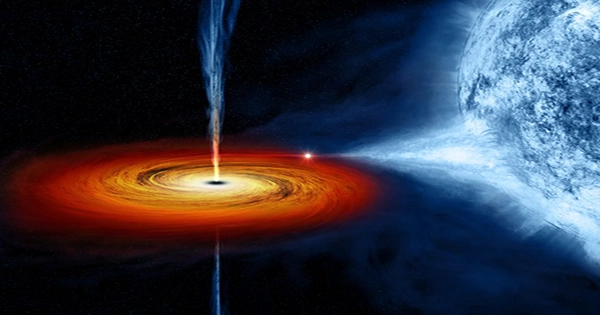Black holes are undoubtedly familiar to you. Even while it’s thought there’s one in the core of every galaxy, and we’ve even photographed one – potentially the one at the center of our own – they remain mysterious objects. Have you ever heard of white holes, the wicked siblings of black holes?
WHITE HOLE: WHAT IS IT? The theoretical opposite of a black hole is a white hole, which is a theorized component of the cosmos. Black holes are objects that produce such a powerful gravitational pull that nothing, even light, can escape. The event horizon, just on the brink of that cliff, is the point at which moving faster than the speed of light is required to escape the black hole’s pull. Nothing in space can move faster than the speed of light, according to Einstein’s special relativity theory.
They eat material that is compacted into a singularity, which is an indefinitely dense ball. Black holes can have a million Suns’ worth of mass compacted into the size of a single Sun. However, if you looked at one, it would be invisible since it does not allow light to pass through.
We know they’re there because enormous objects (those with a lot of gravity) bend space-time around them. This is Einstein’s general theory of relativity. Based on the same general relativity theory as black holes, white holes are hypothesized to exist. They’re supposed to have gravity, so they attract things, yet anything on a collision path with one would never make it.
This is because, in contrast to black holes, white holes do not allow anything to enter, including light and matter. Rather, they perpetually release matter and energy, preventing anything from passing beyond their event horizon. If you looked at them closely enough, they would resemble black holes (if you could see them), but in reverse, with light and matter blasting out into space.
WHAT WOULD HAPPEN IF YOU COME TOO CLOSE TO A WHITE HOLE? If you approached a white hole in a spaceship, you would theoretically be bombarded by a massive quantity of energy, which would most likely kill your ship. Even if your spaceship could withstand gamma rays, light would begin to slow you down in the same way that air resistance does on Earth. Even if the spaceship is designed to be unaffected by the energy release, space-time would be strangely distorted around a white hole, making approaching one seem like running uphill.
The amount of acceleration required would increase as you moved less and less. There isn’t enough energy in the cosmos to even get you close to getting you inside. This is, of course, paradoxical. How may energy appear to come from nowhere other than space-time itself in a white hole? This is one of the reasons why their existence is highly improbable. White holes are feasible in some theories, but maybe not in the way that general relativity describes them.














